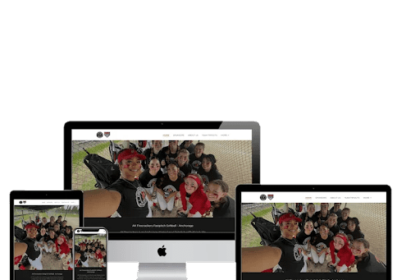In this interview with TechBullion, Inna Sitnikova, a seasoned engineering manager with over 10 years of experience in SAP product implementation, shares insights on her journey and expertise in business process automation. Currently leading teams at EPAM Systems, Sitnikova specializes in enterprise asset management and customer service solutions, working across industries like manufacturing, telecommunications, and logistics.
Throughout the interview, she reflects on her career milestones, leadership principles, and the challenges of automating large-scale projects. Sitnikova emphasizes the importance of clear communication, stakeholder management, and thorough planning in SAP automation projects. She also highlights EPAM Systems’ approach to staying ahead of technological advancements, including fostering continuous learning, leveraging AI and IoT, and maintaining agility in project execution. Finally, she offers advice for aspiring engineers, focusing on mastering technical skills, cultivating leadership abilities, and adopting a proactive, solution-oriented mindset in business process automation.
Please tell us more about yourself.
I have more than 10 years hands-on experience in implementation of SAP products, specializing in enterprise asset management solutions and customer service solutions. Currently I am a functional consultant team lead and an engineering manager at EPAM Systems.
I have deep expertise in technical domains and managing diverse teams and projects. I have numerous successful projects for high-profile clients in Russia and Europe within the following industries: manufacturing, railways, telecommunication, logistics & transportation, utilities. My goal is to help businesses to investigate, analyze, automate business processes, and seamlessly transform their operations using SAP products.
Your career has led you to a leadership position at EPAM Systems. Can you share the key milestones and decisions that shaped your path to becoming an Engineering Manager?
When I started a technology career, I was not considering to go into management.
In my senior years of school, I became interested in the stories of successful entrepreneurs and how they built their businesses. Following my interest, I enrolled to study economics at Voronezh State University, where I completed a master’s degree in Economics. There, I gained a foundation for understanding the economics of enterprises and organizations, management of business processes, and the possibilities for their optimization and automation.
After that, I started in 2013 as a Junior SAP consultant and SAP tester. I gained experience as an SAP consultant and at some moment I realized that my solutions are valuable and I have deep knowledge in a particular area. So suddenly I had to interview new consultants and pass my experience to them as the team grew bigger. Few year later I got my first implementation project as a team lead.
One of the most successful implementation project was for a manufacturing company. The digital transformation we conducted lead to vast savings via the implementation of a single production database that allowed effective usage of the company’s assets. I was very lucky to lead a team of experienced and hard-working people.
In 2023 I was promoted to Engineering Manager where I still have some hands-on tasks and supervising one of the units of consultants.
As an Engineering Manager and Team Lead, what leadership principles guide you in managing teams working on complex SAP automation projects?
I enjoy observing people, I see their strengths and weaknesses, and try to focus more on their strengths. On a project, there are always many tasks: there’s routine work, creative work, analytical work, and work related to communicating with the client. I try to assign tasks in a way that keeps people interested in their work. It’s important to provide constructive feedback, emphasizing strengths and what could be done better. I believe that essential skills for working on large implementation projects include the ability to ask questions, share experiences, and collaborate on complex solutions. I strive to organize an environment where this is possible. Another key to effective work is putting the right people in the right positions. Different projects require different levels of stress resistance; they vary in pace and the level of creative input needed. It’s important that people are on the “right” projects for them. Lastly, but no less importantly: it’s essential to be a role model yourself, demonstrating professionalism and a results-oriented approach through your own example.
In your experience automating business processes and maintenance activities for large enterprises, what are the most significant challenges you encounter, and how do you address them?
Here are several significant issues I’ve encountered in my experience, along with strategies to tackle them effectively:
1) Unclear Requirements and Goal Definition
Challenge: A common difficulty in large-scale automation projects is lack of properly defined requirements. While trying to optimize expenses, companies do not invest much into business analysis and often do not have proper experts to execute it. Without a thorough understanding of business processes, their automation needs, and expected outcomes, projects can suffer from scope creep, delays, and unmet expectations.
Solution:
- Proper Preparation: Initiate the project with an in-depth preparation phase focusing on understanding the business requirements, processes, and expected outcomes of automation.
- Stakeholder Engagement: Engage key stakeholders from different departments early in the process to gather comprehensive requirements and ensure all expectations are aligned.
- Documentation and Sign-off: Ensure all requirements are documented and agreed upon by all stakeholders. This practice minimizes misunderstandings and provides a solid foundation for planning and execution.
2) Inadequate Planning and Scoping
Challenge: Another significant challenge, that might also be a consequence for the first one, is inadequate project planning and scoping, which can lead to overrun timelines, budget escalations, and project failures. This often stems from a lack of understanding of project goals, resources, and timelines, alongside the complexities involved.
Solution:
Develop a Clear Project Plan: Start with a robust project plan that includes milestones, deadlines, goals, and needed resources. Keep this plan flexible and revisit it often to adapt as necessary as the project advances.
Use proper methodology: Properly chosen methodology will ensure that the implementation is completed efficiently, effectively, and with minimized risk.
3) Communication Gaps and Expectation Management
Challenge: Miscommunication within project teams and between teams and stakeholders can lead to misaligned expectations, dissatisfaction, and project derailments. Clear communication channels and expectation alignment are often underestimated.
Solution:
- Clear Communication Channels: Establish open, clear, and regular communication channels among project team members and between the project team and stakeholders. This includes regular status updates, feedback sessions, escalation protocols, implementing adjustments based on the feedback provided.
- Expectation Management: Actively manage expectations through transparent sharing of project plans, progress, challenges, and changes. Setting realistic expectations from the outset and keeping stakeholders informed helps in maintaining trust and collaboration.
4) Demand for Specialized Expertise
Challenge: SAP automation projects often demand specialized expertise. The diversity of skills required can often be a bottleneck, especially in complex automation projects.
Solution:
- Skill Gap Analysis: Conduct a thorough analysis to identify skill gaps within the project team at the outset.
- Training and Upskilling: Invest in training and upskilling initiatives for existing team members to cover identified skill gaps. It can make sense to involve an expert instead of hiring one.
- Strategic Hiring and Partnerships: For highly specialized skills that are not available in-house, consider strategic hiring or forming partnerships with external vendors or consultants who can provide the necessary expertise.
How do you ensure that SAP products seamlessly integrate with existing business processes while maintaining flexibility for future growth?
I would say that there are several factors. Variety of SAP products, SAP best practices and proper implementation methodology insure that requirements are covered and the integration done smoothly.
SAP Products. Utilize SAP’s advanced integration technologies, platforms, such as SAP Cloud products & SAP Integration Suite, as well as middleware. It’s common to develop custom integration solutions using classic interfaces, examples: IDoc, RFC, BAPI, REST, SOAP. These tools are designed to facilitate seamless data flow between SAP and other systems, ensuring coherence and real-time information exchange.
Implementation phases & best practices. Start with a comprehensive analysis of current business processes and systems. Understand the specific requirements, challenges, and objectives of the business to identify the most suitable SAP solutions. Mark possible points of growth.
Prepare your team for the transition through robust training programs. Encourage user adoption with change management practices that emphasize the benefits of the new system and provide support during the adjustment period.
Use SAP’s extensive customization options to tailor the product to fit the unique processes of your business.
Modular approach. SAP provides modular architecture that allows you to add or modify functionalities as your business grows. SAP’s flexibility in integrating with other systems through APIs and middleware should be leveraged to ensure that the architecture can adapt to future changes. Provides connectivity with other applications and data sources. The need for this integration stems from the increasing complexity of modern business processes, often requiring various external tools and partner software beyond SAP’s native capabilities.
The field of automation is rapidly evolving. How do you stay ahead of technological advancements and innovations?
Continuous Learning:
- Keeping Informed: Staying updated with the latest trends in automation and SAP solutions is paramount. Our teams regularly check SAP news portals, official SAP roadmaps, and industry publications to stay informed about new features, updates, and best practices.
- Professional Development: EPAM Systems invests in continuous learning opportunities for our employees. This includes attending SAP courses, certification programs, and webinars that help our team members refine their skills and learn about the latest developments in SAP technologies.
Open-mindedness:
- Innovative Culture: Fostering a culture of innovation and openness is key. We encourage our teams to explore new ideas, experiment with emerging technologies, and think creatively about solving client challenges. Open-mindedness to technological shifts and novel solutions ensures we can leverage the best of what SAP has to offer.
- Research and Development: By dedicating resources to R&D, we can prototype and test innovative solutions that integrate the latest automation capabilities. This proactive exploration enables us to seamlessly incorporate new features and technologies into our SAP solutions.
Networking and Collaboration:
- Community Engagement: Participating in SAP user groups, forums, and tech communities allows us to exchange knowledge with peers, learn from the experiences of others, and stay abreast of industry trends.
- Strategic Partnerships: We maintain strong relationships with SAP and other technology partners. This collaboration provides insights into upcoming developments and how best to prepare for or incorporate them into our services.
Agility:
- Adopting an Agile Mindset: Agility is foundational to our approach. By embracing agile methodologies, we can quickly adapt to changes, integrate new technologies into our SAP solutions, and respond promptly to client feedback or market demands.
- Iterative Development: Our project teams work in iterative cycles, allowing for the integration of new automation technologies and rapid adjustments based on evolving project requirements or technological advances.
Working with large companies often involves complex stakeholder management. How do you approach collaboration with clients to ensure that their business objectives are met effectively?
The objective of stakeholder management is to recognize, involve, and oversee stakeholders across the entire project duration, aiming to fulfill their requirements and expectations, encourage their involvement and contribution, and promptly and efficiently address their issues.
1) Understand the Client’s Business: Start by gaining a deep understanding of the client’s business, including their industry, organizational structure, culture, current challenges, and long-term objectives. This knowledge will guide your approach and allow you to align your services with their goals.
2) Identify Key Stakeholders: Early in the project, identify all key stakeholders across different departments and levels of the organization. Understand their interests, concerns, and how the project impacts them. This helps in tailoring communication and ensuring that everyone’s needs are considered.
Prioritizing stakeholders is also crucial. The following diagram illustrates the varied approach that should be adopted for the categorized and ranked stakeholders:
3) Establish Clear Communication Channels: Set up clear, regular lines of communication with the client. Decide on the frequency of updates, preferred channels (meetings, emails, reports), and the level of detail required. Transparency and open communication build trust and allow for early detection and resolution of potential issues.
4) Set Realistic Expectations: Be transparent about what can be achieved within the given timeframes and budgets. Setting realistic expectations helps in managing stakeholder satisfaction and prevents misunderstandings down the line.
5) Keep Stakeholders sutisfied: It’s vital to keep stakeholders promptly updated on significant developments, alterations, and critical milestones that could impact them, especially if they might not be deeply involved in or concerned with the specifics. Pay close attention to their inquiries, worries, and input, responding quickly and suitably to keep them content. Cultivate and uphold positive interactions to enhance trust. Respect their time by communicating only as needed and employ straightforward language to make the conveyed information readily comprehensible.
6) Deliver Value Early and Often: Try to structure the project and agree on clear vision of deliverables on each phase. For example of deliverables for explore phase:

Source: help.sap.com
What strategies do you employ to foster a culture of continuous learning and development within your team, particularly in the ever-changing landscape of SAP technology?
Encourage Curiosity and Experimentation
- Innovation Time: Allocate regular “innovation time” where team members can explore new technologies, experiment with different tools, and develop prototypes outside of their regular project responsibilities.
- Learning Platforms: Provide team members with subscriptions to leading online learning platforms that offer courses in SAP and other relevant technologies. Ensure the content ranges from fundamental to advanced levels to cater to diverse learning needs.
- In-house Training Sessions: Organize regular knowledge-sharing sessions led by internal or external experts on emerging SAP technologies and trends. Encouraging team members to lead sessions on their areas of expertise can also enhance learning and boost confidence.
Promote Professional Development
- Career Path Planning: Work with each team member to develop a personalized career path plan that aligns with their professional goals and the organization’s needs. Include milestones related to mastering new SAP modules or obtaining specific certifications.
- Certification Support: Offer financial support and study leave for employees pursuing SAP certifications. Recognize and reward team members who achieve certification milestones.
Leverage Real-world Projects for Learning
- Learning by Doing: Encourage learning through the practical application of new SAP technologies in projects. Implement mentorship programs where less experienced team members can work alongside seasoned experts on complex projects.
When automating business processes for a major client, what key performance indicators (KPIs) do you consider to measure the success of the project?
If we are talking about project success then it is rather classical:
Project Management Metrics:
On-Time Delivery: Assess whether the project was completed within the planned timeline.
Budget Adherence: Measure if the project was completed within the allocated budget.
Scope Management: Determine if the project met all the defined requirements without significant scope creep.
Milestone Achievement: Track the completion of key milestones on schedule.
Speaking about main success factors for maintenance business: time and money.
Process Efficiency: Compare the speed and efficiency of business processes before and after the implementation. This could include reduced cycle times, faster order processing, or improved inventory management.
Return on Investment (ROI): Calculates the financial benefits the project brings to the organization compared to its cost. It’s a critical measure of the project’s economic value. Here, for example, Equipment downtime can be a very large contributor to cost and profit avoidance.
Improved Maintenance Efficiency: Measure the reduction in time taken to complete maintenance tasks before and after the SAP PM implementation. This includes both planned and unplanned maintenance activities.
Increased Equipment Uptime: Track the increase in equipment availability and the reduction in downtime. This KPI is crucial for production efficiency and can directly impact the bottom line.
Maintenance Cost Reduction: Compare the maintenance costs (including labor, parts, and materials) before and after implementation. A successful SAP PM project should lead to cost savings through optimized resource utilization and preventive maintenance planning.
Given the current trends in automation and digital transformation, where do you see the future of SAP and business process automation heading?
AI and Machine Learning Integration: SAP and business process automation will further incorporate artificial intelligence (AI) and machine learning algorithms to boost efficiency, predictive analysis, and decision-making processes. This integration will enable more nuanced, context-aware automation that can adapt to changing business environments and predict outcomes with higher accuracy.
Enhanced Experience with IoT: The Internet of Things (IoT) will play a crucial role in gathering real-time data from various sources, including sensors and devices within the operational environment. This real-time data integration into SAP systems will enable businesses to monitor and optimize processes on-the-fly, enhancing responsiveness and operational efficiency.
Here I would like to emphasize the usage and benefit of IoT in plant maintenance. The most advanced strategy in maintenance using IoT is predictive maintenance. It allows work to be carried out only when it becomes necessary, ensuring a high probability of fault-free operation. The predictive planning strategy results in time and financial savings on unnecessary maintenance work, significantly reducing the risks of improper functioning and equipment failure.
Cloud-First Strategies: Cloud computing will continue to influence SAP and business process automation, with a shift towards cloud-first strategies that offer scalability, flexibility, and enhanced collaboration. SAP’s business technology platform and other cloud-native solutions will become the backbone of many organizations’ IT infrastructure, supporting remote work and global operations.
For engineers aspiring to lead in the field of business process automation, what advice would you give them, particularly in mastering SAP technologies and developing leadership skills?








